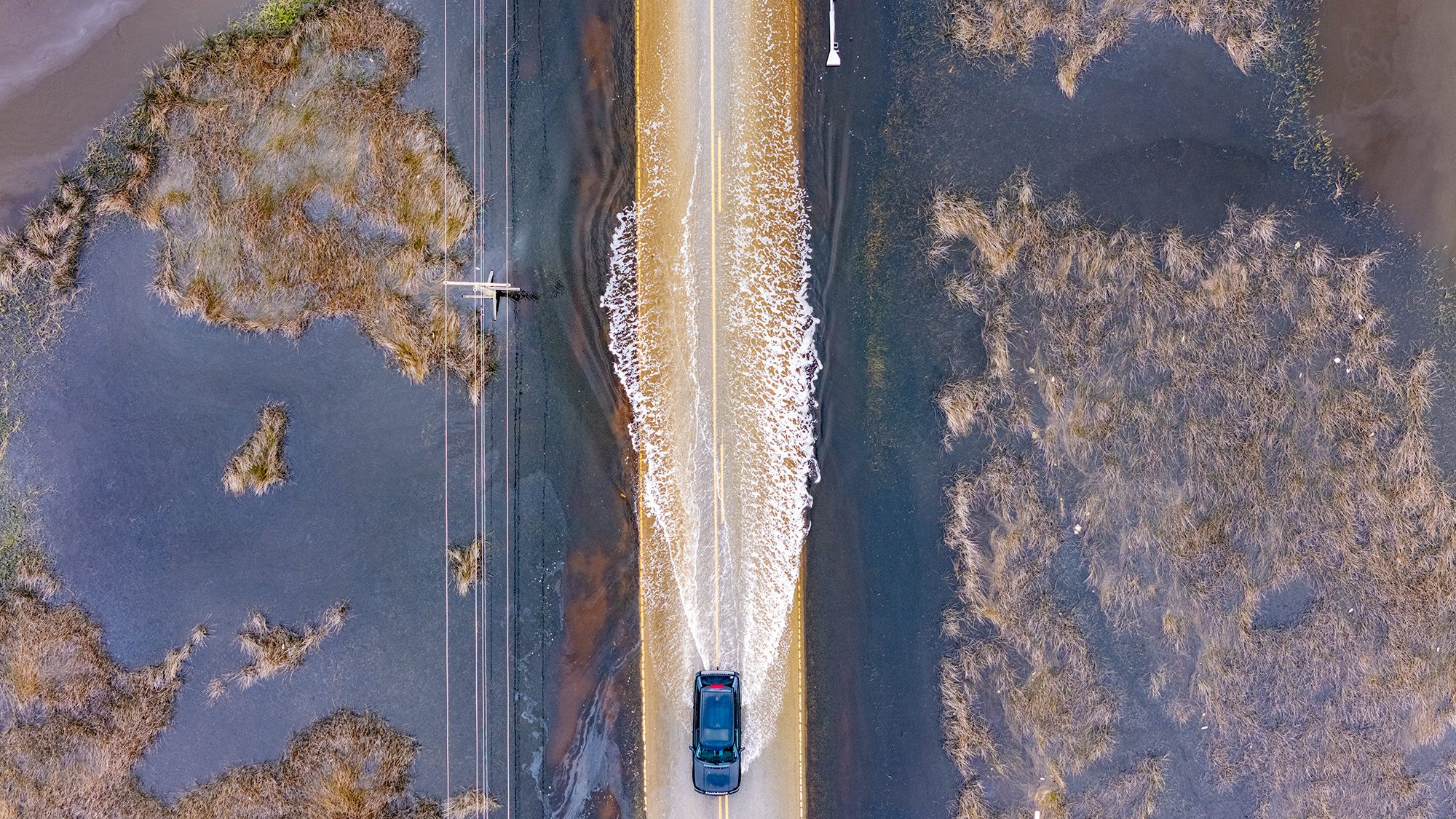Sea level is a misleading term. It implies a flat sea.
The sea is not level. It waves, surges and mounds and is in constant motion.
Supporter Spotlight
Daily tides and winds cause the sea to rise and fall, and that flushes our coastal estuaries keeping good water quality and helping to make our estuaries productive nursery grounds for fish and shellfish.
Floodplains are defined by storm surges. Beaches and shorelines erode and move about because of choppy seas.
Salinity and atmospheric pressure cause the sea to rise and fall as well. Warming and cooling temperatures make water molecules expand and contract, not to mention ice sheets to melt and freeze.
Even the density of water in the ocean influences the level of the sea. Salt water is denser than fresh water. The middle of the Gulf Stream normally is very salty, and that makes it about two meters higher than its edges. In recent decades, melting ice sheets off of Greenland have diluted the Stream’s salinity, and it has become flatter. That’s why scientists are now finding that the east coast north of Cape Hatteras is a hotspot in the world for sea level rise.
The level of the sea is directly influenced by climate change in many other ways. Geologic records provide clear evidence that when the climate warms the sea will rise significantly.
Supporter Spotlight
Understanding what influences sea level takes study and observation. Scientific surveillance helps us to comprehend the far-ranging consequences of climate change and global warming.
Persistent rises in sea level caused by global warming will over time bring about dramatic changes. Higher sea level will make storm surges have more damaging effects. Shorelines will erode more rapidly. Saltwater will intrude further inland changing vegetation to more salt-tolerant species and killing trees and crops that aren’t so resilient to salt. Drinking water supplies will be tainted by salt, and coastal plain industrial users of rivers may experience more disruptions as salt water reaches further upstream to their “freshwater” intakes. In Connecticut, a nuclear power plant was recently shut down because the ocean water used to cool its reactor became too warm.
Whether the scientists are correct or not, the weather makes us painfully aware of just how vulnerable we are to nature’s wrath.The National Academy of Sciences confirmed in 2010 that fossil-fuel emissions are the largest contributor to global warming. A survey conducted last year by the Nature Climate Science Journal found that about 97 percent of working climate scientists agree that the climate is warming due to people burning coal, oil and other fossil fuels. And again this year, many respected climate scientists link this extremely warm year to changes in the climate induced by humans.
Drought is killing crops, and what’s still left to harvest can’t be barged down the Mississippi River because of record low water levels. Food prices are about to soar, forest fires burn up the west and the tropics spit out hurricanes. When added all together, the economic turmoil that results from all this extreme weather is bad for everyone’s pocketbook.
Meanwhile, climate change cynics work hard to convince us that the scientific community disagrees about the causes of global warming and sea level rise.Their tactics work. The 2011 survey conducted by Nature Climate Science Journal reported that 66% of the public wrongly thinks there is a lot of disagreement among scientist over climate change issues.
These naysayers are about as level with us as is the sea. The longer they prevent meaningful collective action against global warming the more severe its economic consequences will be for all of us.
Keep in mind that only three percent of climate scientists cling to the notion that we don’t need to take action prevent climate changes, but only one-out-of-three people know that it’s only a fringe group of scientists who still cast doubts on what’s happening to our climate.
We all know people confused by the propaganda spread by climate naysayers. Do your best to set the record straight, and level with them about why temperatures and the sea may rise much too fast if we keep sitting on our hands.








